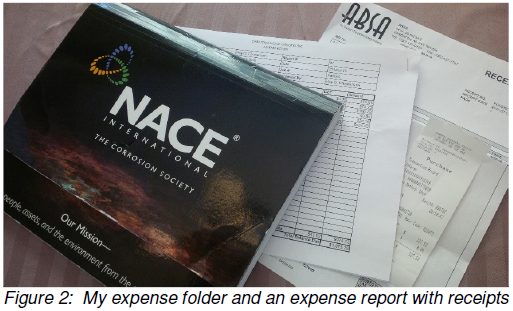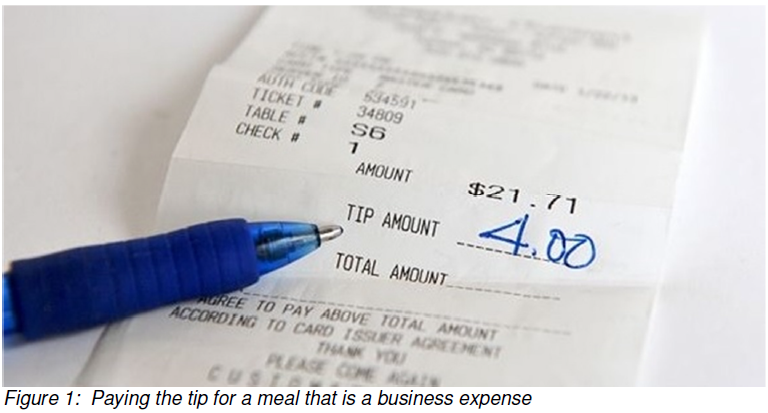More Tips on Tipping and Claiming Meal Expenses
Here are more tips for meals that are a business expense and getting reimbursed
INTRODUCTION
The article How to Tip Your Server at a Restaurant offers excellent advice about tipping. This includes information about international norms and provides an easy way to calculate a 10% or 20% tip. Just move the decimal point of the cost to find 10%, and then double it for 20%.[1]
If the meal is a business expense, however, there are a couple things that must always be done. I will remind you what these are and offer more tips to save you money and time.
DISCUSSION
First, calculating the tip is easy enough. Later when you prepare your expense report, you may need to report the GST separately. Then you may also need to report the sum of the tip and the meal cost, while ensuring the total cost with the sum of all three numbers remains the same.
This number crunching is monotonous and prone to data entry error. It is true what Benjamin Franklin said, that “time is money,” so why not make it as simple as possible? When calculating the tip, round the amount to the nearest full dollar. See an illustration of paying a full dollar amount in Figure 1, which follows these steps.
- In this example, tipping $4.00 for a meal cost of $21.71, provides a tip of 18.42%, instead of tipping $3.92 for 18.00%.
- Then, when preparing your expense report, it is simple to add the tip to the meal cost in your head, if a full dollar amount was used, (i.e., $21.71 + $4.00 = $25.71).
- This is quick, no calculator is required, and a data entry error is unlikely.
Second, for a meal that is a business expense, you must save the receipts! If you do not, your company or employer cannot reimburse you for the expense. The meal then becomes a personal expense, paid for using your after-tax dollars! After paying, keep both the register and payment receipts. Write “COPY” on one, so you do not inadvertently try to expense the same item twice. Write a note on the other about the meal purpose and to list the attendees.
Make it a habit, as soon as you arrive at wherever you file your expenses (e.g., home or office), to immediately file the receipts in a folder designated for that purpose. Then you will be prepared to be reimbursed with the next expense report (e.g., monthly). I file my receipts in a 10” x 12″ expandable file pocket that was given to me at a NACE conference. See my expense folder and an expense report with receipts in Figure 2.

CONCLUSION
To claim and be fully reimbursed for every eligible meal expense, you need to:
- Make the tip calculation as simple as possible; doing this saves time and ensures that any error is easily spotted
- Keep every single receipt; doing this systematically ensures that business expenses are not paid with your personal after-tax dollars.
Note
This article was originally published on LinkedIn 1-Aug-15 https://www.linkedin.com/pulse/more-tips-how-tip-roy-christensen-ret/.
About the Author
Roy O. Christensen is a Welding Engineering Technologist who has over 35 years’ experience with O&G, pipeline, and other projects. He has authored countless instructions, manuals, plans, proposals, reports, specifications, and other documents that continue to drive success for many projects. He is the founder of the KT Project that saves organizations significant money and time, by providing key resources to leverage expert knowledge transfer for successful project execution.
Contact
- Roy O. Christensen
- [email protected]
- +1 403.703.2686
Figures
- Pay the tip for a meal that is a business expense as a full dollar amount, http://www.wikihow.com/Tip-Your-Server-at-a-Restaurant
- My expense folder and an expense report with some receipts, Roy O. Christensen
References
- WikiHow, “How to Tip Your Server at a Restaurant,” http://www.wikihow.com/Tip-Your-Server-at-a-Restaurant

